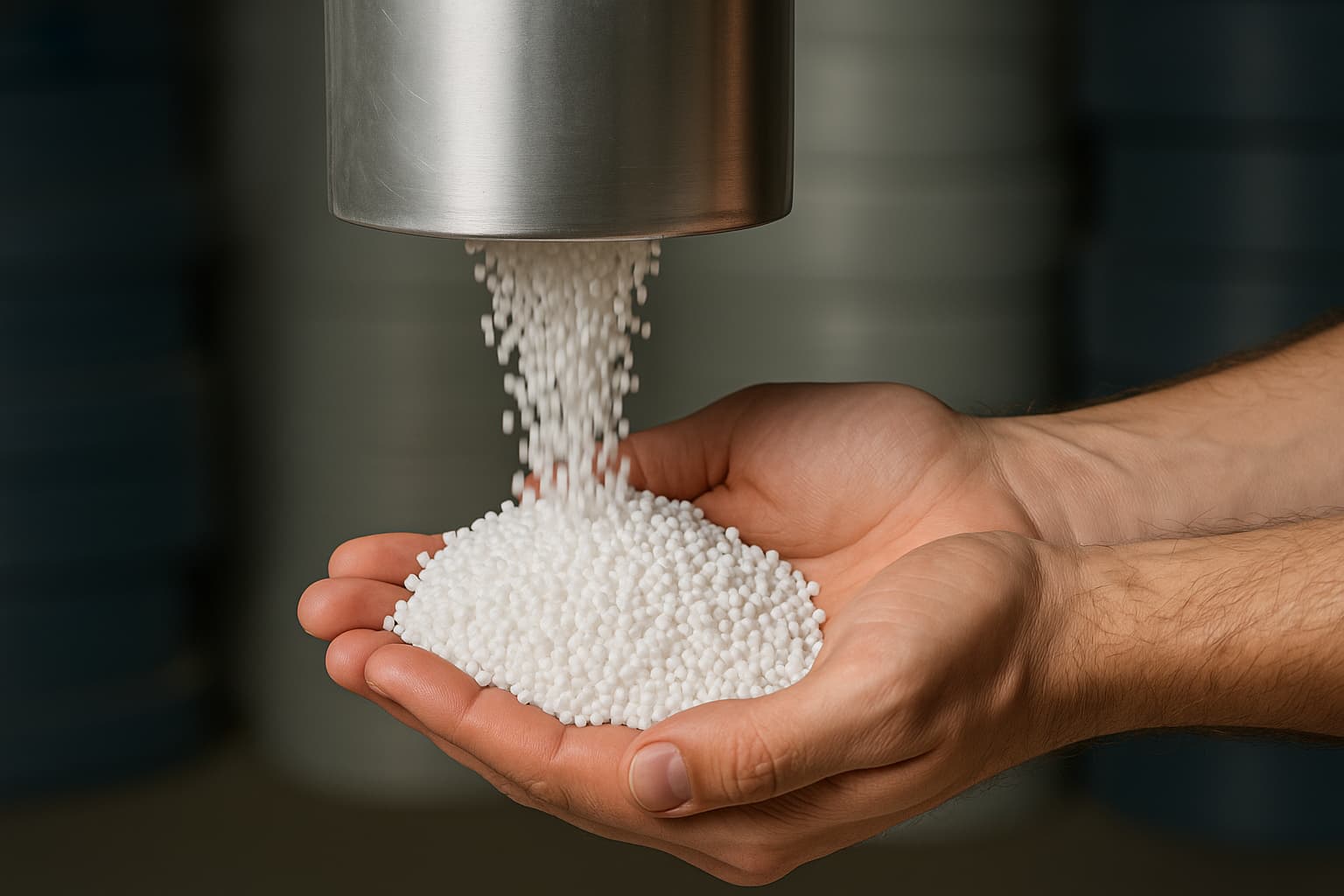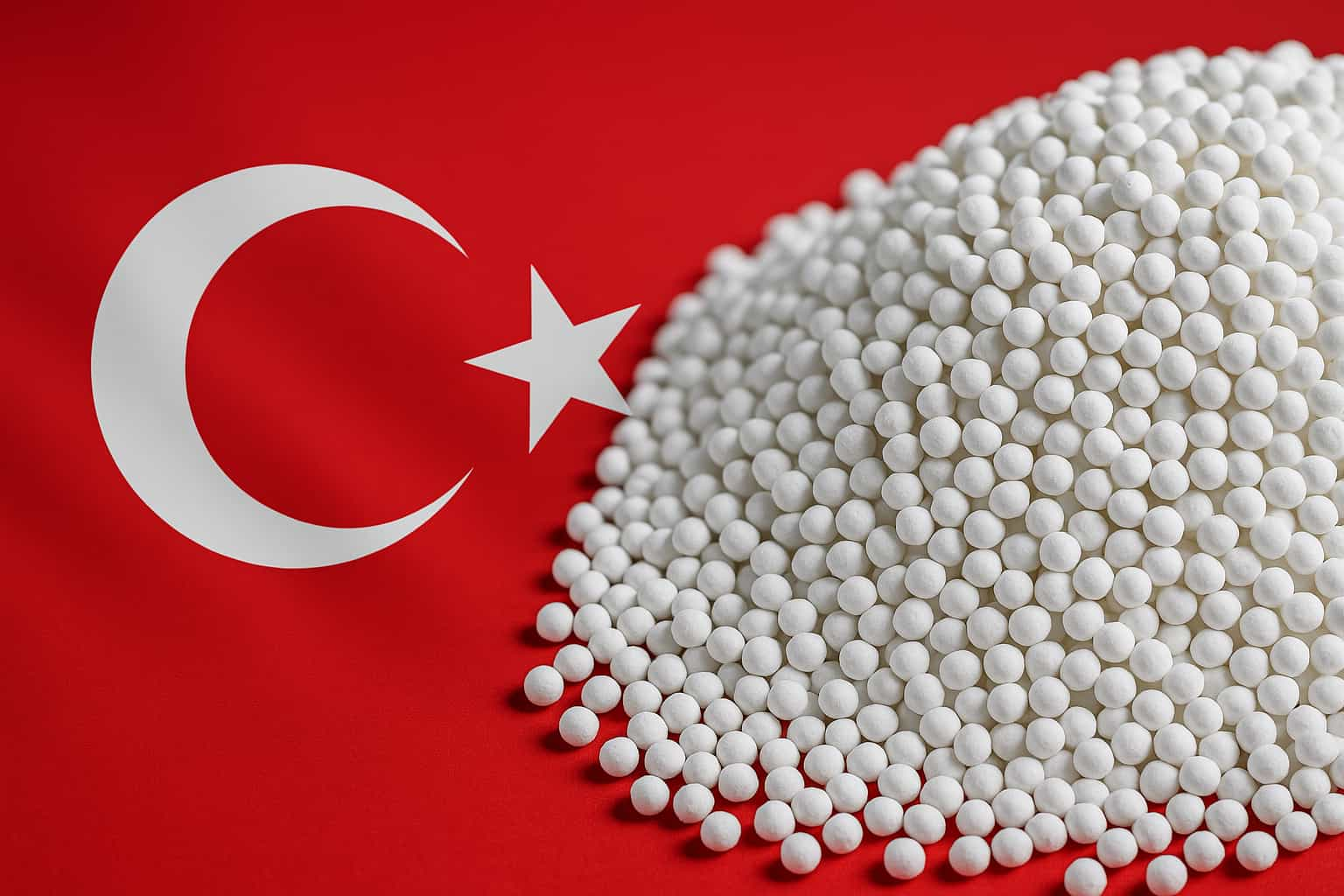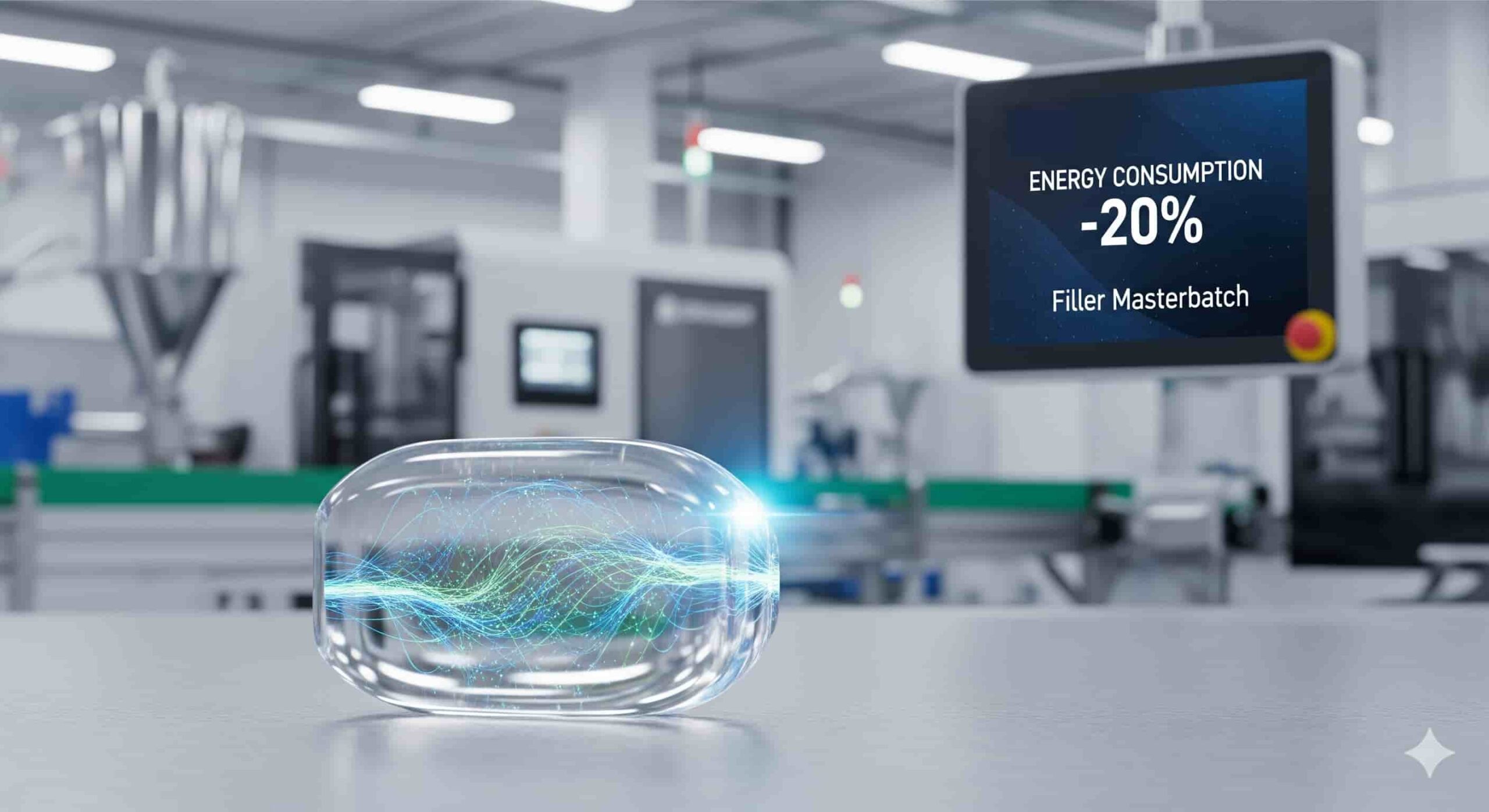Ever wondered why your favorite soda bottle stays crystal clear and sturdy? It’s thanks to clever innovations like PET masterbatch. The global polyethylene terephthalate market is booming. It hit about $47 billion in 2024. And it’s set to reach over $52 billion in 2025. That’s massive growth, driven by demand in packaging, textiles, and more.
PET, or polyethylene terephthalate, is a versatile plastic resin. You see it everywhere—from water bottles to clothing fibers. But raw PET isn’t perfect on its own. It needs a boost for color, strength, or protection. That’s where PET masterbatch comes in.
In this guide, we’ll dive deeper. You’ll learn about types, applications, and how to choose the best. Ready to optimize your PET processing? Contact EuP Egypt for a free sample consultation today. Let’s make your products stand out.
What is PET Masterbatch?
PET masterbatch is a concentrated formulation consisting of pellets that contain pigments, fillers, or additives dispersed within a polyethylene terephthalate carrier resin. This precise dispersion ensures uniform integration during manufacturing processes such as extrusion, blow molding, or fiber spinning.
Unlike messy liquid colorants, masterbatch reduces dust and handling issues. It delivers consistent dispersion, preventing streaks or uneven colors. It works with both virgin and recycled PET. This versatility suits packaging, textiles, and more.
By optimizing resin performance, PET masterbatch cuts waste and meets high industry standards. It’s a must for quality production.
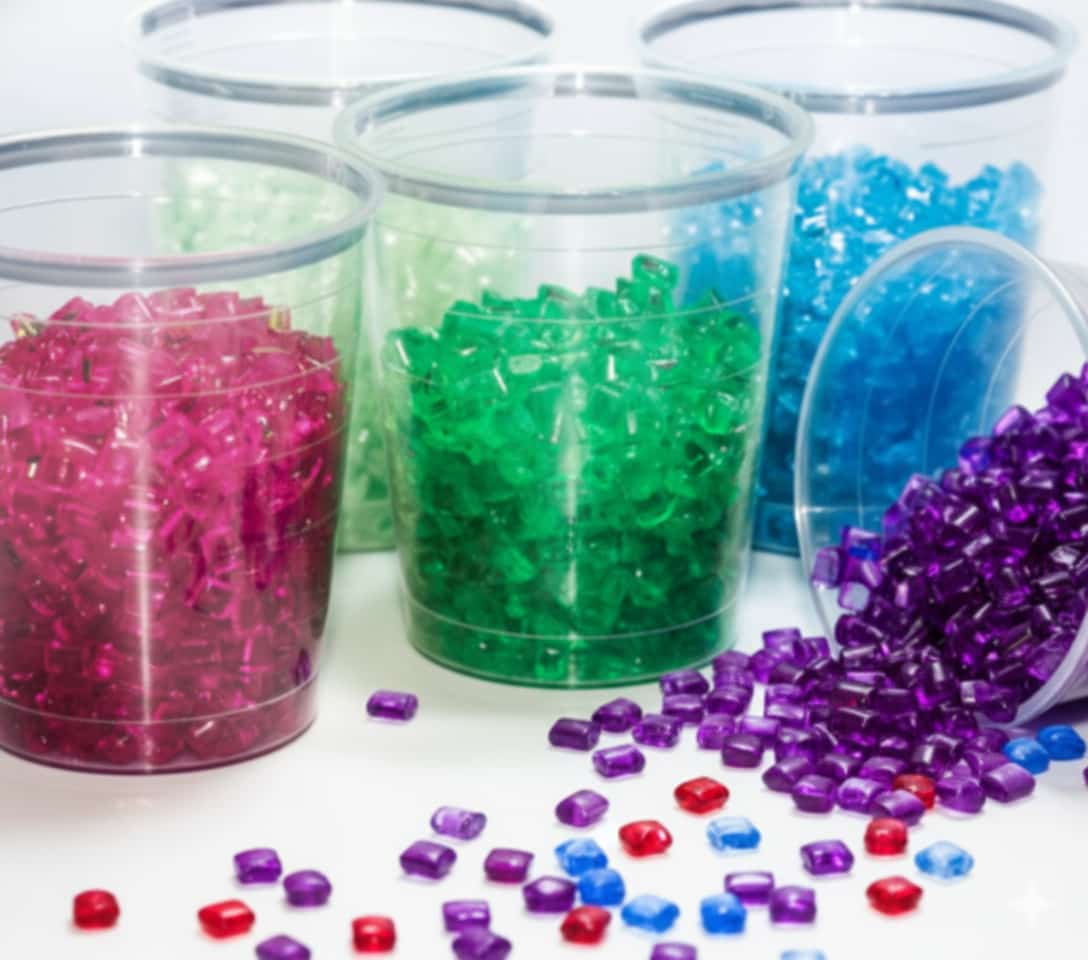
Types of PET Masterbatch: From Color Concentrates to Functional Fillers
PET Color Masterbatch
Want your PET bottles to pop with color? Color masterbatches are the answer. These pellets pack pigments into a PET carrier, delivering bold, consistent hues.
Think clear blues for water bottles or amber tones for pharma packaging. They offer transparent or opaque options, even special effects like pearlescent or frosted finishes.
Manufacturers can match exact brand shades, hitting Delta E tolerances below 1 for precision.
Compatible with recycled PET, they’re eco-friendly too. Whether it’s a sleek soda bottle or a vibrant cosmetic jar, color masterbatches ensure your product stands out on the shelf.
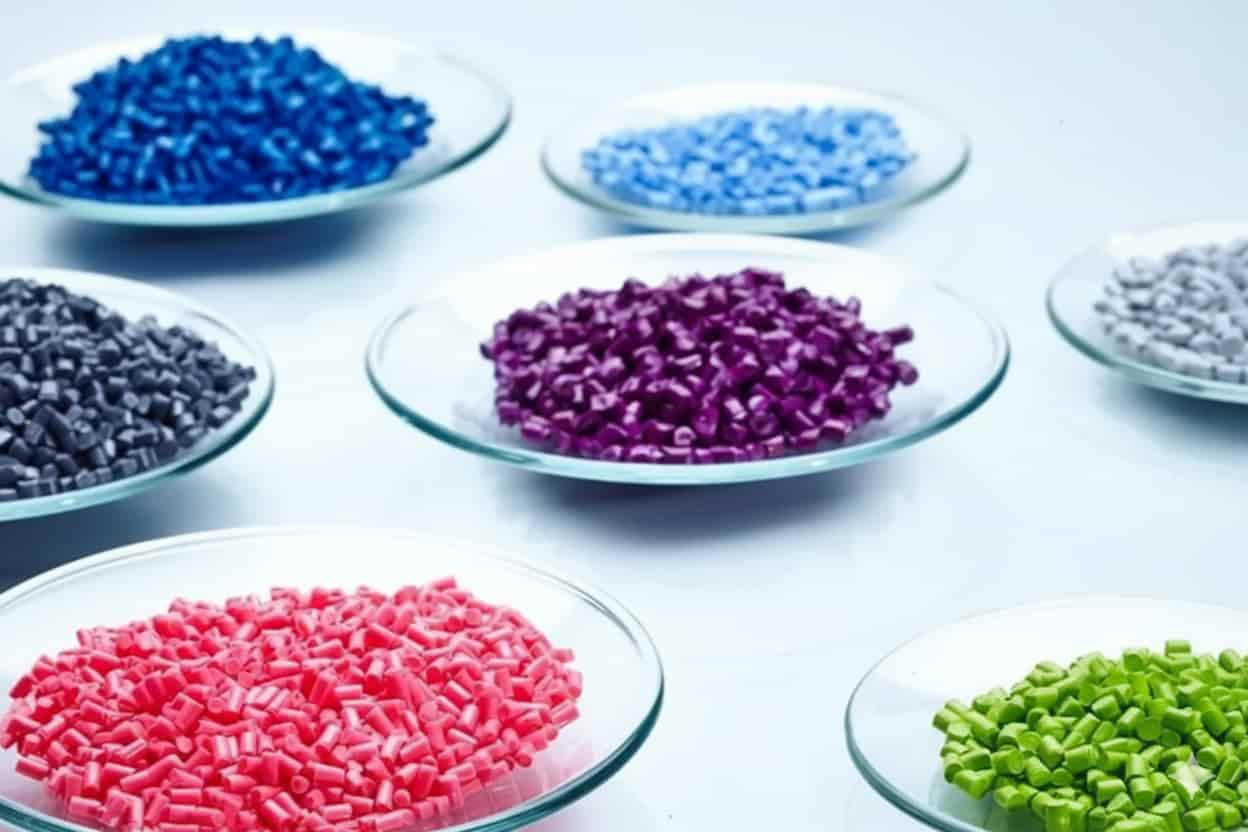
PET Additive Masterbatch
PET additive masterbatches do more than look pretty—they boost performance. These pellets add features like UV protection, keeping sunlight-sensitive products safe with less than 10% light transmission.
Antiblock additives prevent films from sticking during production, perfect for smooth packaging rolls.
Slip agents reduce friction for easier processing, ideal for high-speed lines.
You’ll also find options like antistatic agents or flame retardants. Each type enhances PET’s functionality, ensuring your bottles or films meet specific needs without compromising quality.
PET Filler Masterbatch
Looking to save costs without cutting corners? PET filler masterbatch, like those with calcium carbonate, are your go-to. They can make up 30% of the pellet, adding opacity and density to bottles. This cuts down on expensive raw PET while maintaining strength.
Alternatives like talc or barium sulfate offer similar benefits. These fillers also improve sustainability, reducing reliance on virgin resins and supporting recycled PET use.
For example, they’re perfect for opaque milk jugs or durable trays, balancing cost and eco-conscious production.
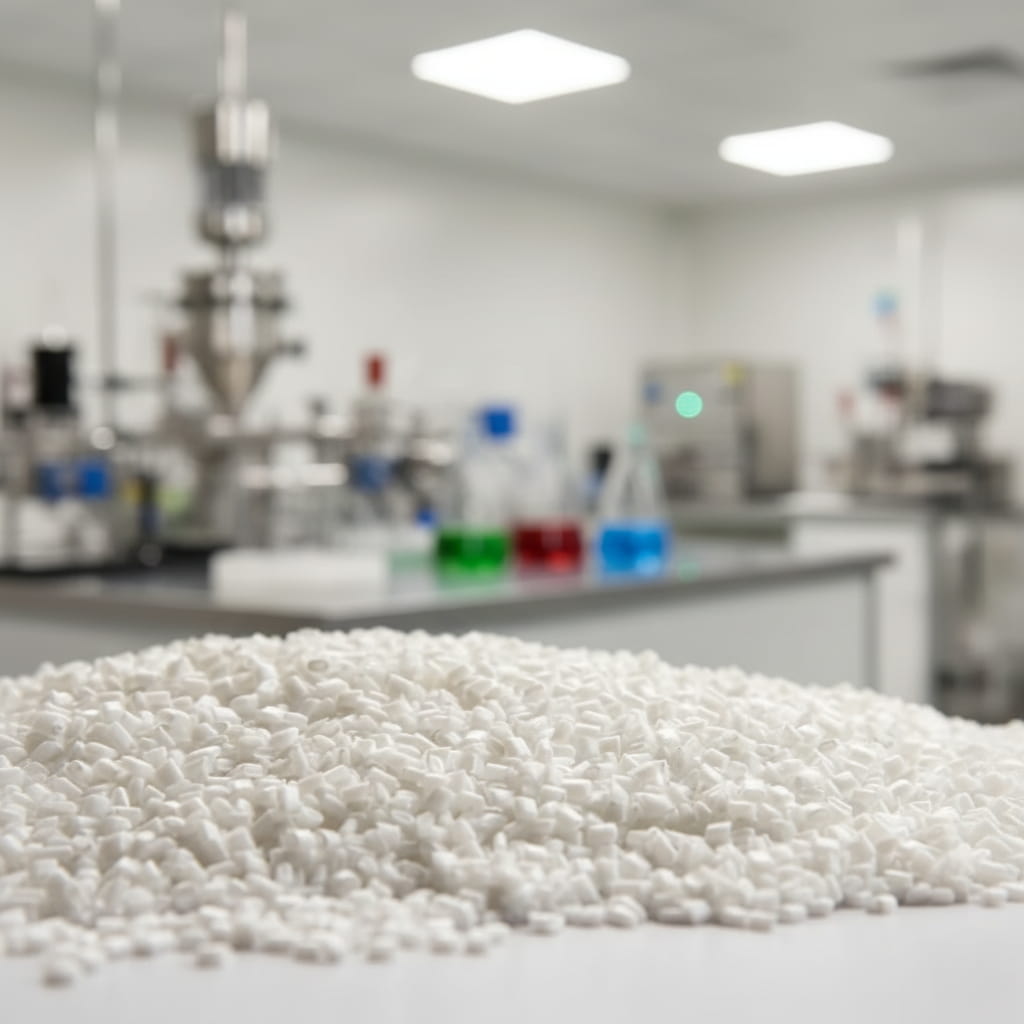
Applications of PET Masterbatch Across Industries
Packaging and Bottling: Bottles, Preforms, and Films
PET masterbatch shines in packaging. It’s the magic behind clear water bottles, sturdy juice containers, and flexible films.
Color masterbatches add vibrant hues or subtle tints to PET preforms for stretch-blow molding.
PET calcium carbonate filler masterbatch boost opacity for milk jugs, cutting costs by up to 20%.
BOPET films, used for labels or food wraps, get a smooth finish with slip additives.
A real-world example? A major dairy brand slashed titanium dioxide use by 50% with fillers, keeping bottles bright and sustainable. Masterbatch ensures packaging is both eye-catching and functional.
Pharmaceuticals and Personal Care: Protective and Aesthetic Solutions
In pharma and personal care, PET masterbatch delivers safety and style.
Amber-colored masterbatches protect light-sensitive drugs, keeping light transmission below 10%. UV additives extend shelf life for items like vitamins or shampoos. These meet strict FDA and USP 661 standards, ensuring no harmful extractables.
For cosmetics, pearlescent or frosted finishes make bottles pop on shelves. Think sleek lotion containers or premium perfume vials.
Masterbatch provides the perfect blend of protection and aesthetics for sensitive products.
Textiles, Automotive, and Emerging Uses
PET masterbatch isn’t just for bottles—it’s big in textiles and beyond.
In textiles, it colors polyester yarns for vibrant clothing or durable carpets.
Additive masterbatches add flame resistance for safety.
In automotive, masterbatch enhances PET parts like interior trims, offering UV stability for long-lasting looks.
Emerging uses include recycled PET applications, like eco-friendly fibers for sustainable fashion. As industries push for greener solutions, masterbatch supports circular economy goals, making it a versatile choice across sectors.
How to Select the Right PET Masterbatch – Technical & Commercial Considerations
Choosing the right PET masterbatch isn’t just about picking a color or additive from a catalog. It’s about finding the right balance between technical performance, cost, and process compatibility. Let’s break down what really matters when making this decision.
1. Start with Compatibility
PET has its own personality. It’s a hygroscopic material, sensitive to moisture and heat, and it behaves differently from polyolefins like PP or PE.
That’s why compatibility is the first box to check. Make sure the masterbatch uses a PET-based carrier resin or one that’s fully compatible with PET. If the carrier isn’t a good match, you might face poor dispersion, haze, or even yellowing during processing.
A quick tip: always check the recommended processing temperature range and drying conditions on the masterbatch datasheet. A mismatch here can lead to degradation or uneven color.
2. Assess Color and Dispersion Quality
Color consistency is a top priority for PET bottles, films, and fibers. A high-quality color masterbatch ensures uniform dispersion — meaning pigments are evenly spread throughout the resin, without streaks or spots.
Ask your supplier about:
- ΔE color difference values (the lower, the better)
- Dispersion tests or visual quality samples
- Heat stability of pigments (important for high-temperature PET processing)
If your application requires special visual effects — like transparency, frost, or metallic finishes — ensure your masterbatch is designed specifically for that purpose. Not every pigment system can handle PET’s high processing temperatures.
3. Define Functional Additives You Need
Color is only half the story. Additives can make a huge difference in performance and durability. Depending on your application, you might look for:
- UV stabilizers to protect beverage bottles or outdoor applications
- Slip and anti-block agents for PET films
- Flame retardants for engineering parts
- Optical brighteners to enhance clarity
- Antimicrobial or anti-fog agents for food packaging
For cost optimization, some manufacturers also blend fillers like calcium carbonate (CaCO₃) to reduce resin consumption while maintaining mechanical strength. These “functional masterbatches” improve both efficiency and performance.
4. Check Regulatory and Sustainability Requirements
If you’re producing food or beverage packaging, compliance is non-negotiable.
Your PET masterbatch should meet FDA, EU 10/2011, or REACH regulations for food contact safety. Always request certification and migration test data.
In today’s market, sustainability is another big factor. Look for suppliers who offer recyclable or eco-friendly masterbatches, especially those optimized for rPET (recycled PET). Some additives now even help improve the appearance and processing of recycled material — a bonus if your company follows circular economy goals.
5. Balance Cost, Dosage, and Supply Reliability
Even the best masterbatch won’t help if it breaks your budget or your supply chain. When comparing options, don’t just look at price per kilogram — consider dosage efficiency.
A masterbatch with higher pigment concentration might cost more upfront but can deliver the same color intensity at a lower let-down ratio, reducing overall cost.
Other commercial considerations:
- Local vs. global supply: local suppliers often mean shorter lead times
- Minimum order quantity (MOQ) and packaging convenience
- Technical support: reliable suppliers offer on-site or remote assistance for troubleshooting
Building a long-term partnership with a consistent supplier helps maintain color uniformity and production stability — something that’s especially crucial for brands producing millions of identical bottles or films.
6. Test Before You Scale
Never skip trial runs. Test the masterbatch on your own equipment under real processing conditions.
Check for:
- Color match and consistency
- Melt flow and processing stability
- Mechanical or optical property changes
A small pilot test helps you confirm whether the masterbatch integrates smoothly with your PET resin and prevents costly issues in mass production.
Future Trends in PET Masterbatch Innovation
Bio-Based and Circular Economy Shifts
Sustainability is reshaping PET masterbatch.
The push for circular economies is huge, especially with 2025 EU regulations demanding 30% recycled content in plastic packaging.
Bio-based masterbatches, made from renewable sources like sugarcane-derived PET, are gaining traction. They cut reliance on fossil-based resins while maintaining performance.
Suppliers are also optimizing fillers to boost recycled PET (rPET) compatibility, reducing carbon footprints by up to 25%. These eco-friendly options align with consumer demand for green products, like fully recyclable bottles.
Expect more brands to adopt these solutions, driven by regulations and cost savings. It’s a win-win: better for the planet and your bottom line.
Frequently Asked Questions About PET Masterbatch
- What is PET masterbatch?
PET masterbatch is a concentrated blend of pigments, additives, or fillers in a PET carrier resin. It enhances color, strength, or functionality in polyethylene terephthalate products like bottles or films during extrusion or molding processes.
- How does PET masterbatch differ from PETG concentrate?
PET masterbatch is designed for polyethylene terephthalate, offering high heat resistance. PETG concentrate suits glycol-modified PET, which is less brittle but not ideal for high-temperature processing like stretch-blow molding.
- Can PET masterbatch be used with recycled PET?
Yes, most PET masterbatches are compatible with recycled PET (rPET). They ensure uniform color and performance, supporting sustainable production while meeting quality standards for packaging or textiles.
- Are PET masterbatches safe for food packaging?
Absolutely. High-quality PET masterbatches meet FDA, REACH, and USP 661 standards, ensuring no harmful extractables. They’re ideal for food and beverage containers, like water or juice bottles.
-
What dosage should I use for a color masterbatch in PET?
The ideal dosage depends on the pigment concentration and the color intensity you want to achieve. Typically, most PET color masterbatches are used at 1–5% let-down ratio. However, highly concentrated masterbatches may perform well at just 0.5–2%. Always start with the supplier’s recommendation, run a small trial, and adjust gradually for the best color match and processing stability.
- Can I use a PP or PE-based masterbatch in PET?
It’s not recommended. PET has a very different molecular structure and melting behavior from polyolefins like PP or PE. Using an incompatible carrier can cause poor dispersion, haze, or delamination in the final product. Always choose a PET-based carrier or one proven to be chemically compatible with PET resin to maintain clarity and mechanical integrity.
- What’s the difference between transparent and opaque PET masterbatch?
Transparent masterbatch uses pigments or additives that allow light to pass through, ideal for bottles and clear films. Opaque masterbatch contains fillers or special pigments (like TiO₂ or CaCO₃) to block light and create a solid color effect. Choosing between them depends on your product’s purpose — transparent for visual appeal, opaque for UV protection or privacy.
- How can I avoid common processing issues with PET masterbatch?
Most problems — like streaking, haze, or poor color dispersion — come from moisture or incorrect drying.
Always dry PET and masterbatch thoroughly before use, and maintain proper temperature profiles in the extruder. If issues persist, consult your supplier’s technical team — many provide on-site testing and formulation adjustments to help you achieve consistent results.


